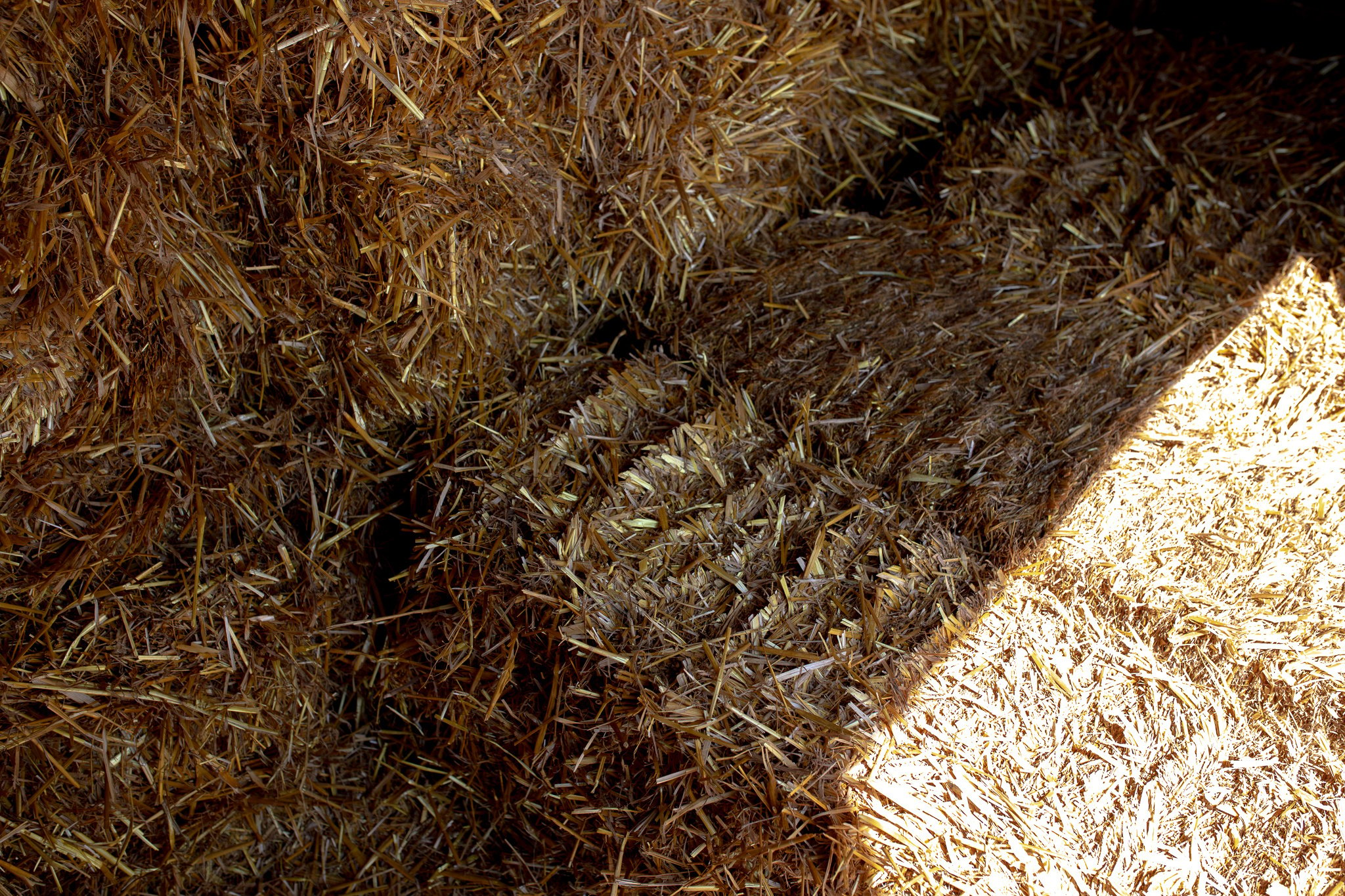- Information
- Reviews
| Article number: | Straw Bale |
Current and historic uses of straw include:
- Animal feed
- Straw may be fed as part of the roughage component of the diet to cattle or horses that are on a near maintenance level of energy requirement. It has a low digestible energy and nutrient content (as opposed to hay, which is much more nutritious). The heat generated when microorganisms in a herbivore's gut digest straw can be useful in maintaining body temperature in cold climates. Due to the risk of impaction and its poor nutrient profile, it should always be restricted to part of the diet. It may be fed as it is, or chopped into short lengths, known as chaff.
- Basketry
- Bee skeps and linen baskets are made from coiled and bound together continuous lengths of straw. The technique is known as lip work.
- Bedding: humans or livestock
- The straw-filled mattress, also known as a palliasse, is still used in many parts of the world.
- It is commonly used as bedding for ruminants and horses. It may be used as bedding and food for small animals, but this often leads to injuries to mouth, nose and eyes as straw is quite sharp.
- Biofuels
- The use of straw as a carbon-neutral energy source is increasing rapidly, especially for biobutanol. Straw or hay briquettes are a biofuel substitute to coal.
- Biogas
- Straw, processed first as briquettes, has been fed into a biogas plant in Aarhus University, Denmark, in a test to see if higher gas yields could be attained.
Straw should not be fed without supplementation because rarely does straw provide enough energy and protein to meet an animal's requirements. However, straw is a good alternative in rations for cows and sheep if properly supplemented with higher quality feedstuffs.
Differences in feeding value do exist among the straws. Oats is the most palatable and nutritious; barley straw is second and wheat straw has the lowest nutritional value of the main grains. Millet straw is more palatable and higher in energy and protein. Flax straw is lower in feed value than all the others because of its lower digestibility.








